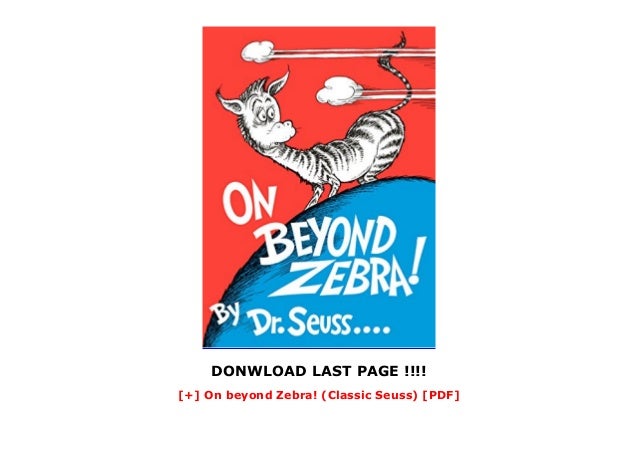
“The Black Lives Matter movement, I think, has also brought into focus the need for diverse books for young readers. “This is the culmination of decades of work arguing for diverse works and against books that caricature people of color,” Nel said. Seuss' 1950 book, "If I Ran the Zoo." Dr.

Seuss Enterprises to cease publishing the books - which in addition to “Mulberry Street” and “If I Ran the Zoo,” also include “McElligot’s Pool,” “On Beyond Zebra!”, “Scrambled Eggs Super!” and “The Cat’s Quizzer” - is owed to the longtime push for diverse books in the U.S., as well as recent movements for racial and social justice. There were plenty of white Americans during that time who were not spreading the rhetoric that he was.” “All people in every moment don’t think the same. “The ‘man of his time’ narrative isn’t a great argument because to make that claim is profoundly ahistorical,” Nel said. Seuss’ political cartoons by featuring original drawings from the library of the University of California, San Diego - including “Waiting for the Signal From Home. Ishizuka is working on developing a new core exhibit for the museum that she hopes will bring greater attention to Dr. Seuss' other political cartoons during this time use the slur “Jap,” depict Japanese people as animals, and include captions that replace the letter R with the letter L to mock the way Japanese people speak.Ī 1941 political cartoon by Dr. Roosevelt issued Executive Order 9066, which led to the incarceration of more than 110,000 individuals of Japanese descent. 13, 1942 - just six days before President Franklin D. Titled “Waiting for the Signal From Home … ,” the cartoon depicts countless characters with the same slanted eyes and glasses - who are meant to be Japanese Americans - marching along the West Coast and waiting to pick up TNT from a store labeled “Honorable 5th Column.” The cartoon was published on Feb.

One of his most infamous political cartoons suggested that Japanese Americans were a threat to the U.S. From 1941 to 1943, he published more than 400 cartoons for the New York newspaper “PM,” many of which displayed anti-Japanese racism during World War II.
#Offensive images in on beyond zebra series
Seuss, the pen name for Theodor Seuss Geisel (who died in 1991, at 87), also perpetuated harmful Asian stereotypes in a series of political cartoons. His racism wasn’t limited to children’s books.
#Offensive images in on beyond zebra skin
Seuss eventually edited the image from “Mulberry Street” in 1978, more than 40 years after it was first published, by removing the yellow pigment from the Asian man’s skin as well as the pigtail, and changing “Chinaman” to “Chinese man.” But the character’s slanted eyes remained.

society, are put forth in jest as if they are innocuous.”ĭr. Especially when buffered in Seuss’ rhyming verse, his racist depictions, already normalized in U.S. “Generations of Americans have grown up with depictions of Asians that ranged from grotesque to comical. Seuss’ racism,” Ishizuka told NBC Asian America.

“No doubt, the long-standing prevalence of racist Asian imagery within the larger widespread anti-Asian sentiment in the U.S. Seuss' books have been able to get away with this racism for so long in part because of the persistence of anti-Asian racism in the U.S. Karen Ishizuka, chief curator at the Japanese American National Museum in Los Angeles, said Dr. Though Seuss’ art has been around for decades - “Mulberry Street,” his first children’s book, was published more than 80 years ago - widespread criticism of his work is relatively recent.


 0 kommentar(er)
0 kommentar(er)
